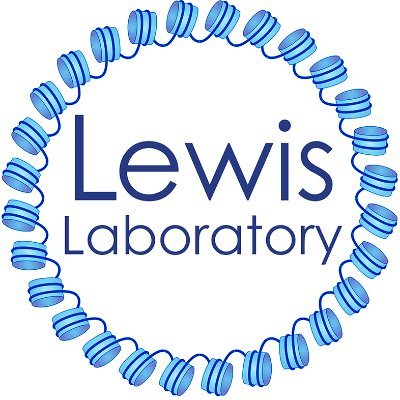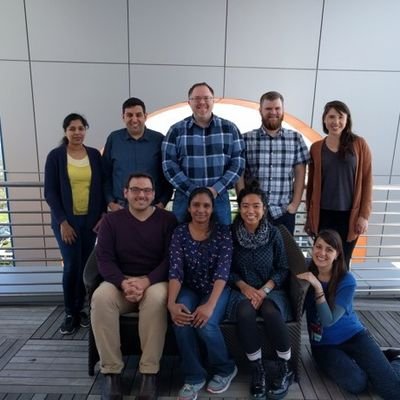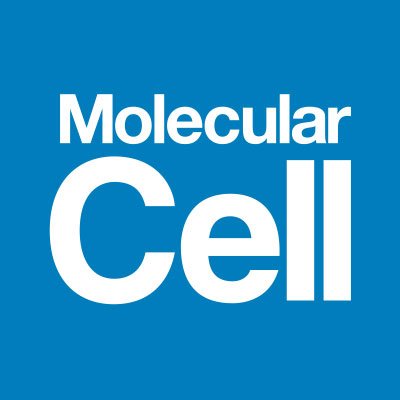
The Lewis Lab
@PeterLewisLab
Followers
1K
Following
2K
Media
68
Statuses
372
Chromatin biochemistry and genomics in development and cancer. @UWMadison @UWSMPH @BMC_UW
Wisconsin, USA
Joined March 2019
We are excited to share our new preprint demonstrating that nucleic acid interactions with SUZ12 constrain PRC2 activity, establishing a kinetic buffer essential for targeted gene silencing and revealing vulnerabilities in diffuse midline gliomas. https://t.co/4TYHUgQEgd
2
5
37
Mechanisms of DNMT3A–3L-mediated de novo DNA methylation on chromatin
nature.com
Nature Structural & Molecular Biology - Yan et al. use cryo-EM to obtain structures that reveal how DNMT3A2 and DNMT3L cooperate to read histone signals and bind chromatin, illustrating a...
0
1
6
1/ 🚀 AEBP2 isn’t what we thought. You were told that AEBP2 promotes PRC2 activity on chromatin. We found the opposite: the most prevalent AEBP2 isoform inhibits PRC2 activity. Excited to share our new paper https://t.co/TkvcVM26xi A thread 🧵
1
8
17
Happy to share our latest work on Polycomb repression reprogramming in early development, spearheaded by two super talented Ph.D students Yitian Zeng and Feng Kong.
cell.com
Zeng et al. identify EZHIP as a critical epigenetic reprogramming factor in mouse early embryos, which promotes global erasure, intergenerational inheritance, and re-establishment of H3K27me3. They...
4
16
96
Our work "Aquarius helicase facilitates HIV-1 integration into R-loop enriched genomic regions," is out in @NatureMicrobiol
https://t.co/7wj0ra5f7U
2
7
18
Really excited that our manuscript on Synovial Sarcoma is now online. Link to Open Access PDF: https://t.co/XieopaPRvN A summary🧵 :
1
2
20
@BeatrizGerFalc summarizing some of her latest work with the lab. #EZH2 controls cell plasticity in #ProstateCancer through coordination with activation of #translation and the RNA degrading protein #tristetraprolin @CPDR_Labs
1
5
26
The summer has been busy! Along with the move and a PhD defense, we have updated two preprints: https://t.co/JoMkPOXioo and https://t.co/m7B71YyhAh
biorxiv.org
Cellular senescence, characterized by a stable cell cycle arrest, is a well-documented consequence of several widely used chemotherapeutics that has context-dependent roles in cancer. Although...
3
4
45
Hypertranscription state in early embryos that both shapes and is fostered by the three-dimensional genome organization, revealing an intimate interplay between chromatin structure and transcription @Nature @xielablife
https://t.co/L1f0XkYAvE
1
14
61
Online Now: Distinct specificity and functions of PRC2 subcomplexes in human stem cells and cardiac differentiation https://t.co/bYdZD1fDiw
1
23
112
VEFS: the NBD is gone. RNA binding is rare (small red bubble). Most PRC2 is RNA-free (large green bubble), catalytically active, and binds both CpG and non-CpG sites. Result: diffuse H3K27me3 that pulls PRC1 away from its normal targets, disrupting gene silencing.
1
0
0
ncMUT: PRC2 still binds RNA efficiently (large red bubble, large red arrows), so catalysis stays limited. But without accessory subunits, PRC2 targeting is unfocused. Result: most PRC2 remains in the RNA-bound state, with little productive methylation at CpG islands.
1
0
0
Wildtype SUZ12: much of PRC2 can interact with RNA ( red bubble), which blocks engagement with nucleosomes. Accessory subunits (PRC2.1/2.2) target CpG islands. Result: strong H3K27me3 at intended sites, little elsewhere. Arrow size= rate. Bubble size= how much PRC2 in the state.
1
0
0
PRC2 silences genes by adding H3K27me3 at the right spots in the genome. Our new work shows how the nucleic acid-binding domain (NBD) of SUZ12 keeps this activity under control, and what happens when you remove it.
2
22
92
This work was lead by PhD candidate Cecilia Gavilan, with contributions from multiple Iwase lab members. Check it out online!
0
1
1
Ever wondered what else SETD2 does beyond transcription? 🧬 Check out our new @NatureCellBio study. Awesome work from Abid Khan (@AbidKhanEpigen) showing how SETD2 moonlights to safeguard the genome during cell division. https://t.co/VCVZD09jUK
9
17
72
Excited to see this published with additional data following our preprint a while back. Cool combination (in our biased view) of controlled TF expression and machine learning to decode chromatin sensitivity. https://t.co/12VxDjpwsP.
Excited to share our latest preprint. Lead by Sevi (@biosevi) we asked how transcription factors (TFs) with short and abundant motifs drive specific cell fates. Our test cases: Two bHLH factors that bind to seemingly similar E-boxes. 1/7
2
32
135
Excited to share with you our latest preprint on SMARCA2/4 degraders! at the @UoDCeTPD in collaboration with #GeorgWinter´s lab. Here, we show how a Molecular Glue Degrader can covalently and redundantly recruit DCAF16 and FBXO22 to degrade SMARCA2/4 https://t.co/DmM53sXYie
3
16
53
(1/n) Excited to share our new preprint! We uncover that RNA actively promotes nucleation and function of pathogenic condensates, amplifying locus-specific oncogenic transcription and promoting tumorigenesis. #epigenetics #condensates #cancer #RNA
biorxiv.org
Aberrant chromatin-associated condensates have emerged as drivers of transcriptional dysregulation in cancer, yet the mechanisms regulating their formation and function remain poorly understood....
3
15
58



















